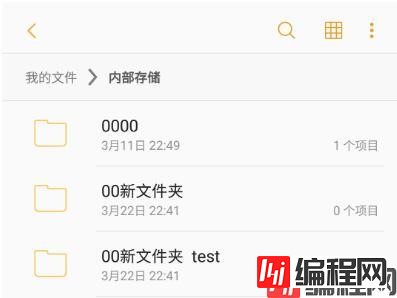Python 官方文档:入门教程 => 点击学习
如下面所示,如果我们用file的readline或readlines,在每一行后面都有一个\n回车符 直接os.path.exists(readline)时总会返回false &
如下面所示,如果我们用file的readline或readlines,在每一行后面都有一个\n回车符
直接os.path.exists(readline)时总会返回false
>>> from os.path import exists
>>> exists('dog.png')
True
>>> exists('dog.png\n')
False使用item.strip('\n') #前面的item为我定义的变量
去掉后再传递给os.path.exists(item) 就OK了。
补充:当os.path.exists(path)的path中包含有空格时返回结果为False的解决方案
之前有个问题一直没有解决, 当路径中或文件名中存在空格时,用os.path.exists(path)判断是否存在时,都会返回False. 百思不得其解. 今天在用ipython偶到想到想了解一下到底是什么原因?
事实上,当用input()接收path输入时,path中有空格时,生成的str是不一样的. 如下:
In [4]: path = input('请将文件拖入:')请将文件拖入:"C:\Users\xxxxx\Desktop\filename with space.txt"
In [5]: path
Out[5]: '"C:\\Users\\xxxxx\\Desktop\\filename with space.txt"'
In [6]: path1 = input('请将文件拖入:')请将文件拖入:C:\Users\xxxxx\Desktop\filenamewithspace.txt
In [7]: path1
Out[7]: 'C:\\Users\\xxxxx\\Desktop\\filenamewithspace.txt'
In [8]: os.path.exists(path)
Out[8]: False
In [9]: os.path.exists(path1)
Out[9]: True很明显,带有space时生了的str多了一层""字符串,故将多余的""去掉应该就可以了.以下为验证实例
In [10]: path2 = path.replace('\"', '')
In [11]: path2
Out[11]: 'C:\\Users\\xxxxx\\Desktop\\filename with space.txt'
In [12]: os.path.exists(path2)
Out[12]: True当前读取手机存储空间的文件时,当手机root目录中存在还中文或带空格的文件/文件夹时(如下图),就会出错.

一般这时为了要读出这些文件夹,一般的操作为:
In [23]: cmd = 'adb shell ls /sdcard/'
In [24]: file_list = os.popen(cmd).readlines()
---------------------------------------------------------------------------
UnicodeDecodeError Traceback (most recent call last)
<iPython-input-24-b7ae01065f81> in <module>
----> 1 file_list = os.popen(cmd).readlines()
UnicodeDecodeError: 'gbk' codec can't decode byte 0xae in position 10: illegal multibyte sequence一般会报以上的错误或是不报错,但是中文文件/文件名可能为乱码,从以下的help(os.popen)可以了解后,os.popen()也是不能设置encode方式的,无解哈.
In [25]: help(os.open)
Help on built-in function open in module nt:
open(path, flags, mode=511, *, dir_fd=None)
Open a file for low level IO. Returns a file descriptor (integer).
If dir_fd is not None, it should be a file descriptor open to a directory,
and path should be relative; path will then be relative to that directory.
dir_fd may not be implemented on your platfORM.
If it is unavailable, using it will raise a NotImplementedError.所以又回到之前写的一篇文章上,要用subprocess.run()全面替换掉os.system/os.popen,这样就可以解决这些问题了.
In [27]: cmd = 'adb shell ls /sdcard/'
In [28]: file_list = subprocess.run(cmd, capture_output=True, encoding='utf-8', shell=True).stdout.
...: splitlines()
In [29]: file_list[0:3]
Out[29]: ['0000', '00新文件夹', '00新文件夹 test']故上两个困扰了很久的问题,终于找到了解决方案,开心一下
以上为个人经验,希望能给大家一个参考,也希望大家多多支持编程网。如有错误或未考虑完全的地方,望不吝赐教。
--结束END--
本文标题: Python os.path.exists()函数总是返回false的解决方案
本文链接: https://lsjlt.com/news/121720.html(转载时请注明来源链接)
有问题或投稿请发送至: 邮箱/279061341@qq.com QQ/279061341
2024-03-01
2024-03-01
2024-03-01
2024-02-29
2024-02-29
2024-02-29
2024-02-29
2024-02-29
2024-02-29
2024-02-29
回答
回答
回答
回答
回答
回答
回答
回答
回答
回答
0